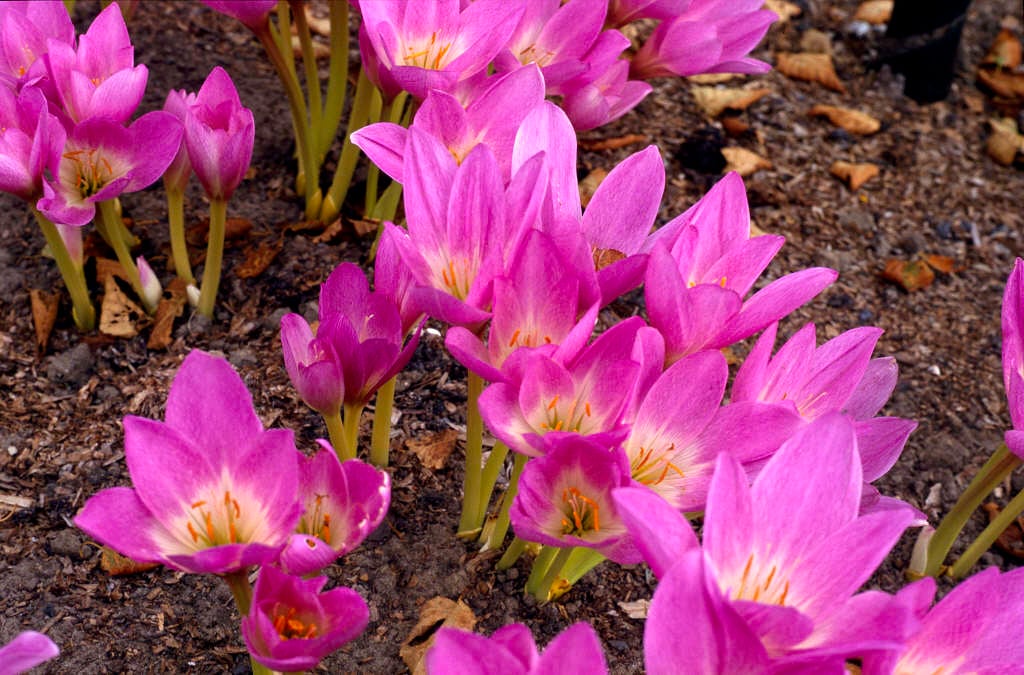Not the plant you're looking for? Search over 300,000 plants
Bulbs
Size
Ultimate height
0.1–0.5 metresTime to ultimate height
2–5 yearsUltimate spread
0.1–0.5 metresGrowing conditions
Chalk
Clay
Loam
Sand
Moisture
Moist but well–drained, Well–drainedpH
Acid, Alkaline, NeutralColour & scent
| Stem | Flower | Foliage | Fruit | |
| Spring | Green | |||
|---|---|---|---|---|
| Summer | ||||
| Autumn | Pink Purple | |||
| Winter |
Position
- Full sun
Aspect
South–facing or West–facing or East–facing
Exposure
Sheltered Hardiness
H5Botanical details
- Family
- Colchicaceae
- Native to GB / Ireland
- No
- Foliage
- Deciduous
- Habit
- Clump forming
- Potentially harmful
- TOXIC if eaten. Wear gloves and other protective equipment when handling TOXIC to pets - see the HTA guide to potentially harmful plants for further information and useful contact numbers
- Genus
Colchicum are cormous perennials with usually coarse, broadly strap-shaped leaves which appear with or after the goblet-shaped flowers
- Name status
Correct
- Plant range
- N Turk., Iran, Cauc.
How to grow
Cultivation
May be naturalized in turf. Grow in moist but well-drained, deep, humus-rich, fertile soil. Intolerant of waterlogging
Propagation
Propagate by seed sown in containers in an open frame when ripe or separate corms when dormant in summer
Suggested planting locations and garden types
- Cottage and informal garden
- Wildlife gardens
- Wildflower meadow
- Rock garden
- Underplanting of roses and shrubs
- Flower borders and beds
Pruning
No pruning required
Pests
May be susceptible to slugs
Diseases
May be subject to bulb grey mould
Get involved
The Royal Horticultural Society is the UK’s leading gardening charity. We aim to enrich everyone’s life through plants, and make the UK a greener and more beautiful place.
